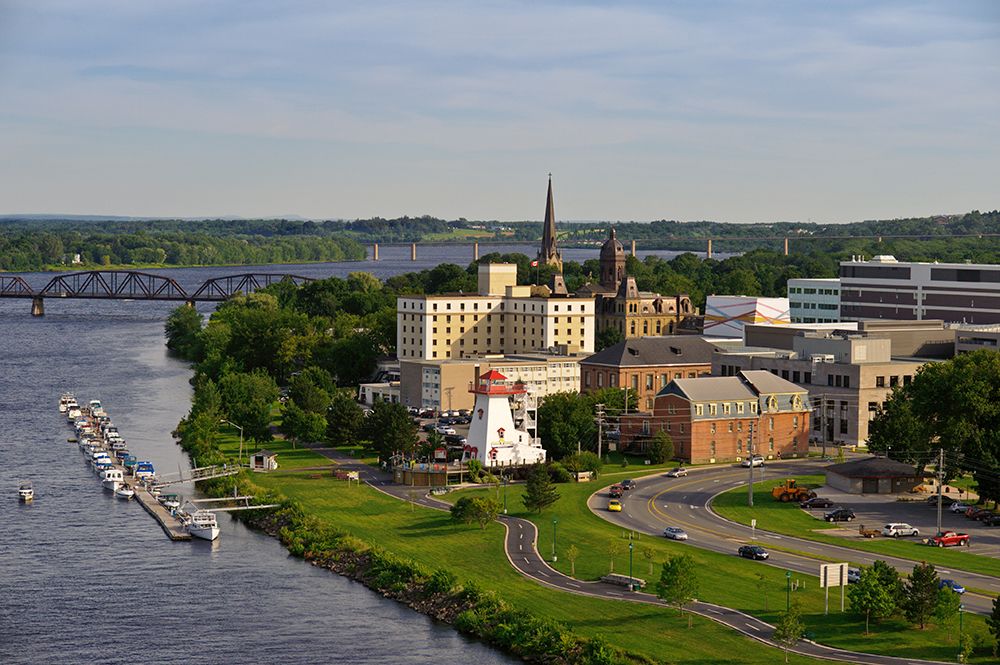Fredericton is the capital of the Canadian province of New Brunswick. The city is situated in the west-central portion of the province along the Saint John River, which flows west to east as it bisects the city. Take a look below for 30 interesting and fun facts about Fredericton, New Brunswick, Canada.
1. The river is the dominant natural feature of the area. One of the main urban centres in New Brunswick, the city had a population of 58,220 in the 2016 Canadian Census.
2. It is the third-largest city in the province after Moncton and Saint John.
3. The name can also be pronounced without the second but this is irksome to some residents.
4. An important cultural, artistic, and educational centre for the province, Fredericton is home to two universities, the New Brunswick College of Craft and Design, and cultural institutions such as the Beaverbrook Art Gallery, the Fredericton Region Museum, and The Playhouse, a performing arts venue.
5. The city hosts the annual Harvest Jazz & Blues Festival, attracting regional and international jazz, blues, rock, and world artists.
6. Fredericton is also an important and vibrant centre point for the region’s top visual artists; many of New Brunswick’s notable artists live and work there today.
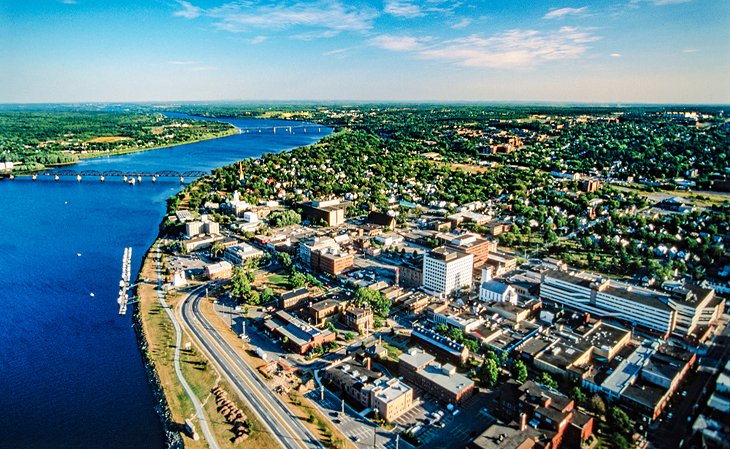
7. Fredericton has also been home to some great historical Canadian painters as well, including Goodridge Roberts, and Molly and Bruno Bobak.
8. As a provincial capital, its economy is tied to the public sector; however, the city also contains a growing IT and commercial sector.
9. The city has the highest percentage of residents with post-secondary education in the province and the highest per capita income of any city in New Brunswick.
10. There is archaelogical evidence of a camp in the area 12,000 years ago, and Maliseets farmed several kilometres upriver.
11. Colonists from the Kingdom of France in the late 1600s built Fort Nashwaak on the north side of the Saint John River, as the capital of Acadia. It withstood a British attack in 1696, but the capital was later moved to Port Royale.
12. In 1713, Acadians escaping the British takeover of Nova Scotia settled the site, naming it Pointe Ste-Anne. It was destroyed in 1758 when the population of about 83 were exiled during the expulsion of the Acadians.
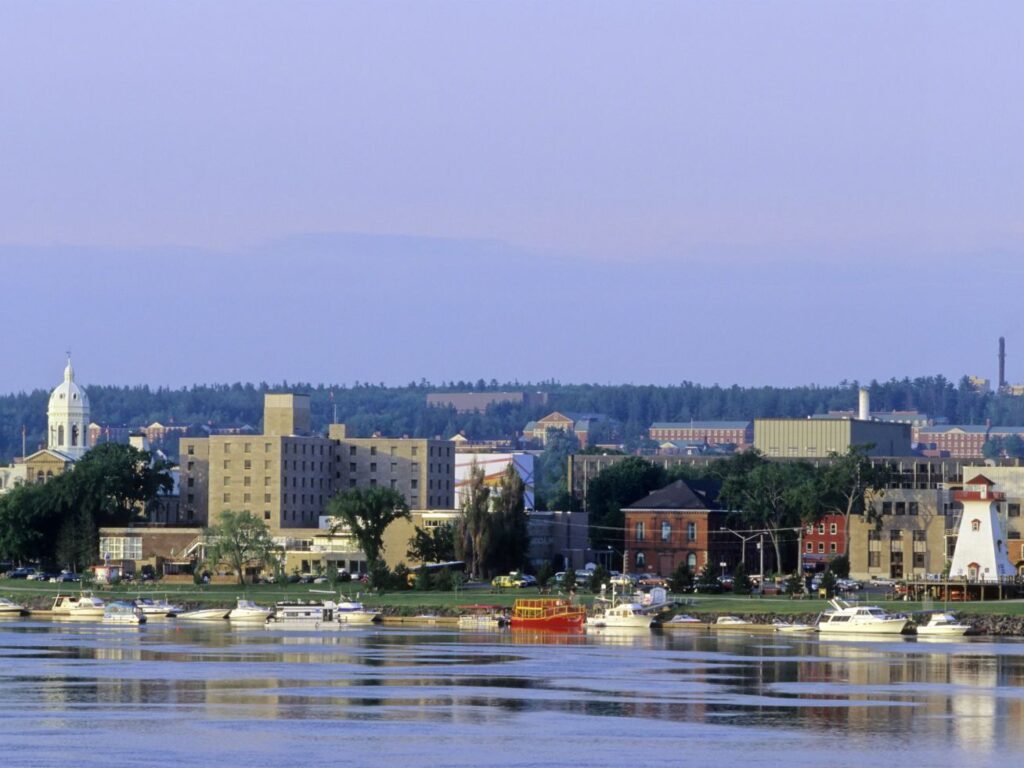
13. It was in 1783, when United Empire Loyalists arrived from New England, that the history of modern Fredericton began. The following year New Brunswick was partioned from Nova Scotia and became its own colony.
14. Pointe-Ste-Anne was renamed “Fredericstown”, after Frederick, second son of the King King George III. It became the capital of the new colony, being considered to have a better defensive position than larger Saint John.
15. The streets were laid out in the typical grid pattern of the time, with the names reflecting loyalist tendencies: Charlotte, Brunswick, George, King, and Queen.
16. In 1785, it became the shire town of York County. In 1790 the New Brunswick Legislative Building was constructed. As a centre of government, it attracted educational institutions, with King’s College (now the University of New Brunswick) being the first English-language university in Canada, and religious institutions, with Christ Church Cathedral being built as the seat of the Anglican Diocese of Fredericton in 1853.
17. It was a British garrison town from 1784 to 1869, and the military compound is preserved as a National Historic Site of Canada.
18. With the New Brunswick Equal Opportunity program in the 1960s, county councils were abolished, and government services were centralized provincially in Fredericton, increasing jobs and population.
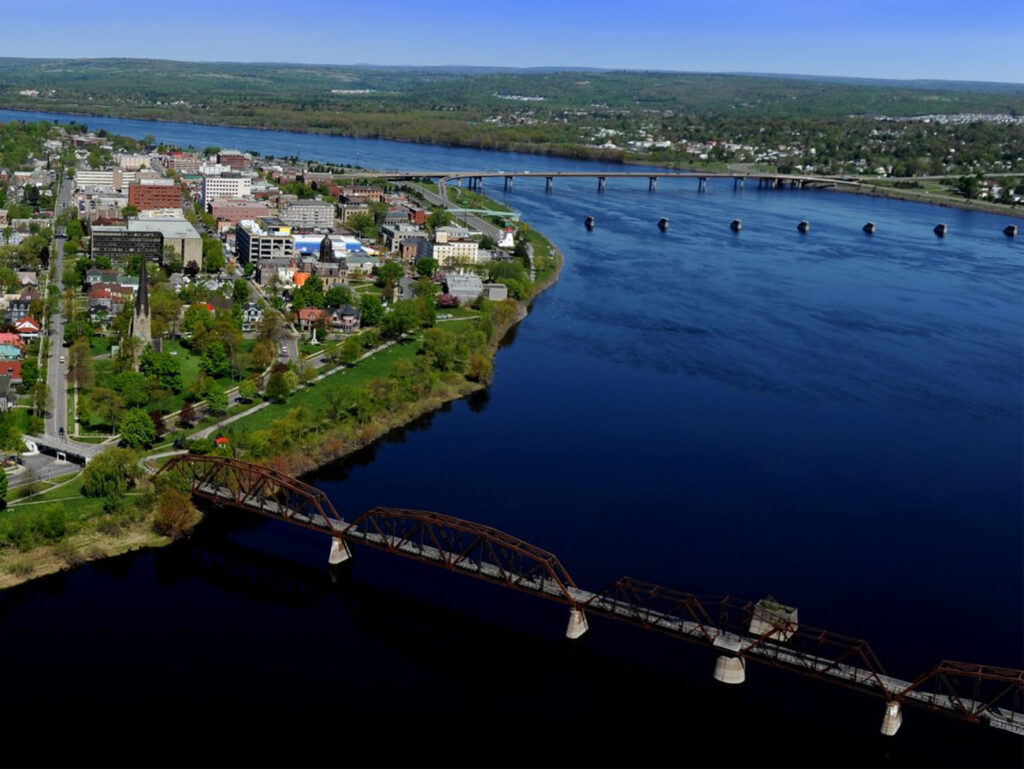
19. The Saint John River runs through Fredericton, with most of the city’s post-war suburban development occurring on the gently sloping hills on either side of the river (although the downtown core is flat and lies low to the river).
20. At an altitude of about 17 m (56 ft) above sea level, Fredericton is nestled in the Pennsylvanian Basin. It differs markedly from the geologically older parts of the province. There are prominently two distinct areas in the region that are divided around the area of Wilsey Road, in the east end of the city.
21. In the west side, the bedrock underneath the earth is topographically dominant, whereas the other is controlled by Pleistocene and recent deposits leading to the rivers (resulting in the area being shallow and wide). Fredericton and its surroundings are rich in water resources, which, coupled with highly arable soil, make the Fredericton region ideal for agriculture.
22. The Saint John River and one of its major tributaries, the Nashwaak River, come together in Fredericton. The uninhabited parts of the city are heavily forested.
23. Fredericton has a humid continental climate. On average, Fredericton receives approximately 1,100 mm (43 in) of precipitation per year.
24. The population of the city of Fredericton is 58,220 (2016 Canada Census) and 101,760 for Greater Fredericton.
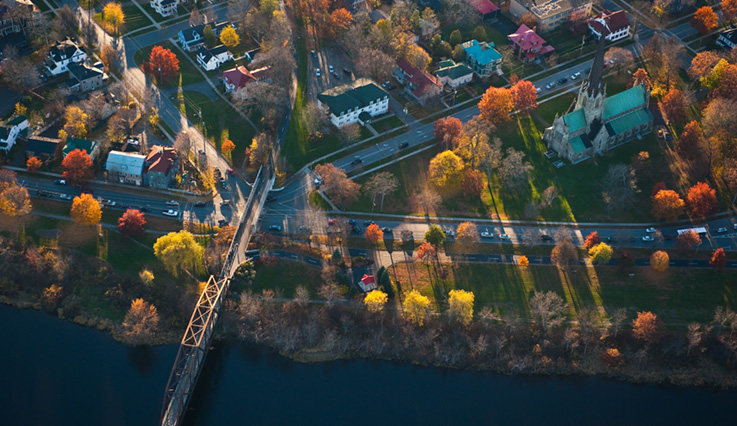
25. Along with Moncton and Halifax, Fredericton is one of three Maritime cities to register a recent population increase.
26. Fredericton’s population are predominantly European Canadians. Visible minorities make up 10 per cent, and include, in descending order of population, Indigenous peoples (many the St. Mary’s First Nation Indian reserve), Chinese Canadians, Black Canadians, South Asian Canadians, Arab Canadians, and refugees from the Syrian Civil War.
27. English is spoken by 82% of residents. Other mother tongues are French (6.8%), Chinese languages (2.1%), Arabic (1.6%), and Russian (0.6%).
28. Those who declare a religion are predominantly Protestant. Fredericton has a synagogue, a mosque, a Hindu temple, a Unitarian fellowship, and a Shambhala Buddhist meditation centre.
29. The Government of New Brunswick and the universities are the primary employers. The policies of centralizing provincial government functions during the 1960s led to an expansion of the population.
30. The city has been investing actively in IT infrastructure. The City of Fredericton won the “Judges Innovation Award” at the 2004 Canadian Information Productivity Awards due to their “Fred-eZone” free municipality wide Wi-Fi initiative. This and other innovations by the city’s utelco, e-Novations, led Intel to do a case study on their successes. Fred-eZone spans much of the city’s downtown and parts of surrounding residential areas, as well as peripheral commercial areas such as Fredericton’s Regent Mall. In 2008 and 2009 the Intelligent Community Forum selected Fredericton as a Top 7 Intelligent Community, based partly on the city’s work in the IT sector.

